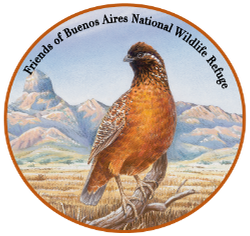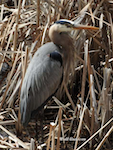
Great Blue Heron
by Walt Anderson
As a lanky young wildlife biologist wading through a marsh on a waterfowl survey, I envied the stately grace of the Great Blue Heron. At 4’ tall with a 6’wingspan, this bird had mobility that put me in my hip boots to shame. I developed a genuine affinity for this elegant wading bird, and it is only appropriate that it is honored in this photo essay. You may have seen them at Arivaca Cienega or one of the other ponds that appears after good rains.
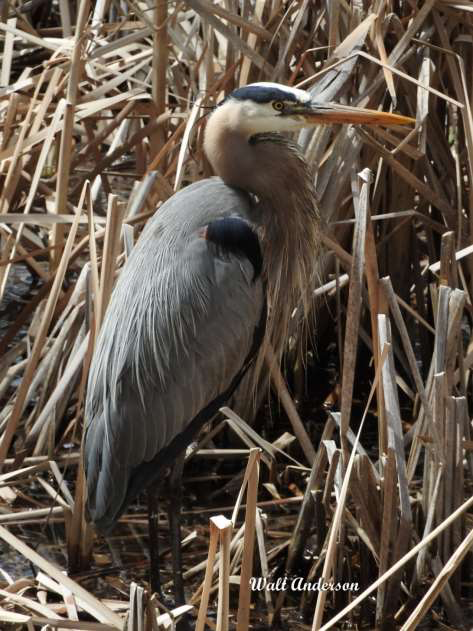
Herons epitomize wetlands, and if you want a heron, just add water. Well, it also needs suitable nesting sites, usually trees, though occasionally a cliff or rocky island will do, and it needs a good amount of aquatic prey, for it can sometimes eat its body weight (5-8 pounds) in a single meal. To eat like a bird is beyond the physical ability of even the most voracious human, even Charles Barkley!

A heron in its stalking feet. They are true carnivores, feeding upon fish, frogs, snakes, crayfish, dragonflies, and other large insects. Young blackbirds in their nests are delicacies, and adult blackbirds often harass them, even sitting on their backs while pecking ineffectually. Ducklings also occasionally are taken by hunting herons.
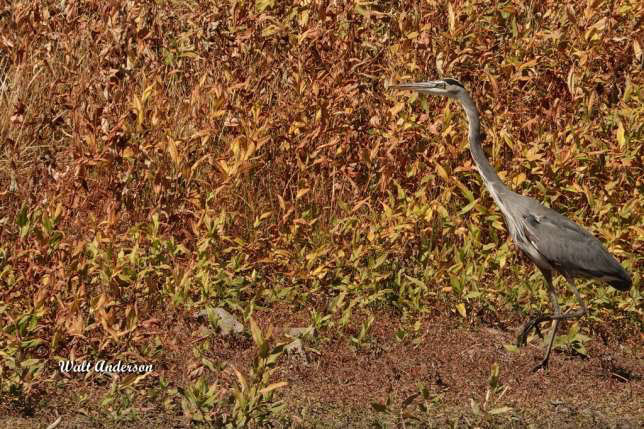
Herons also hunt on land, carefully stalking pocket gophers and voles. Once I saw one sneaking toward a family of young Burrowing Owls perched at the entrance of their den.
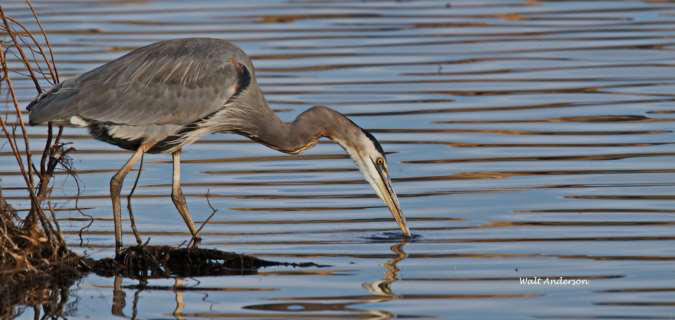
The s-curve in a heron’s neck enables it to strike with surprising speed and force. The bill is an effective dagger.
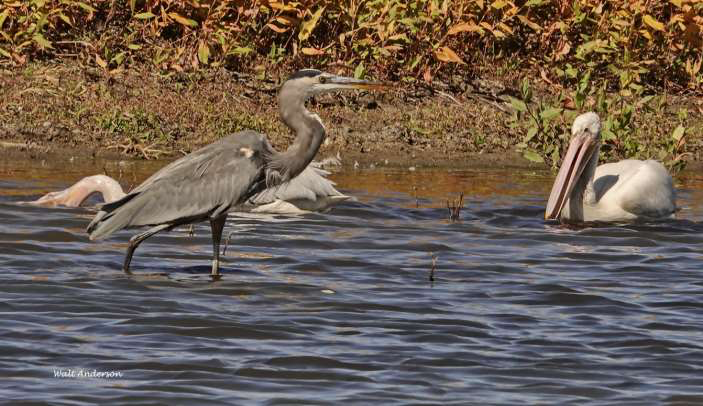
The hunting styles of herons and pelicans are obviously quite different, though they may eat the same kinds of fish. Occasionally a heron may stab a fish so large that you would swear it couldn’t be swallowed, but soon there is a huge bulge in the heron’s neck as the fish descends toward a pond of powerful gastric juices. No chewing is involved. There are instances of an over-ambitious heron choking to death on a plus-sized fish.
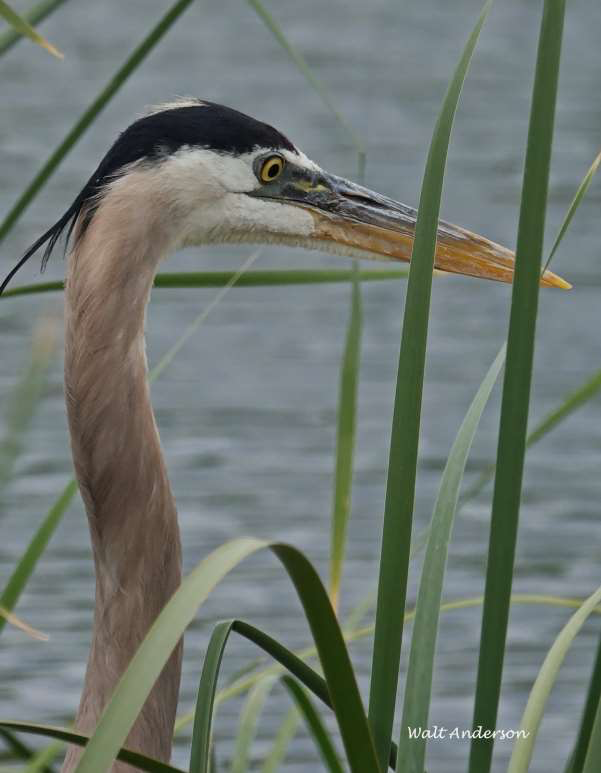
Notice how the eyeball can be shifted forward to enable binocular vision for accurate stabbing. The eyes are positioned laterally to allow tremendous peripheral vision, and herons can even see well under water. They have “fast-focus reflexes.” It’s hard to sneak up on a heron, though if you move about as slowly as it does, it may let you get close like this. Patience pays.
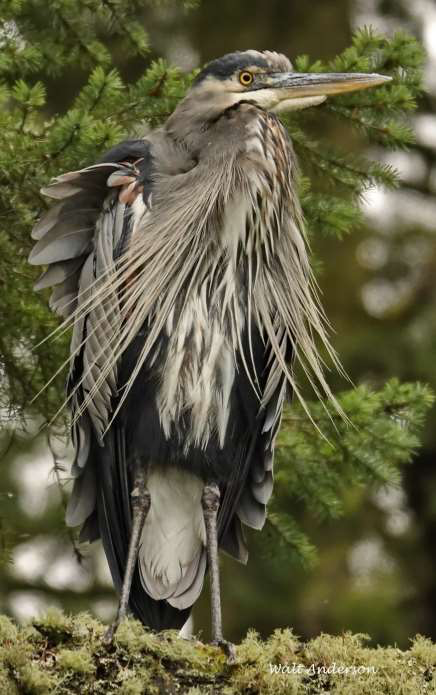
This heron in the Pacific Northwest displays the nuptial finery that herons and egrets get during the breeding season. The feathers are part of impressive courtship displays. However, they nearly led to the extinction of these birds over a century ago, as lady’s fashion favored elaborately feathered hats, and millions of birds were killed for the millinery trade. In 1903, bird hunters were paid $32 per ounce of plumes, and it took four dead herons or egrets to add up to an ounce! To stop the slaughter, pioneering conservationists formed Audubon societies, and in March 1903, Teddy Roosevelt established the first national wildlife refuge, Pelican Island in the Everglades, to protect egrets, herons, and other breeding wading birds.

Herons are solitary hunters, but they nest colonially, often with other large waterbirds. In Prescott, Arizona, the Cottonwood Peninsula at Willow Lake hosts an active mixed colony of herons and cormorants. This colony was formed after the City of Prescott in 1998 purchased water rights for the reservoirs, thus creating year-round wetlands with ample food supplies for the birds. As bird populations increased, the area received official designation as the Watson and Willow Ecosystem Important Bird Area (IBA), and birding tourism now gives a very welcome boost to the local economy.
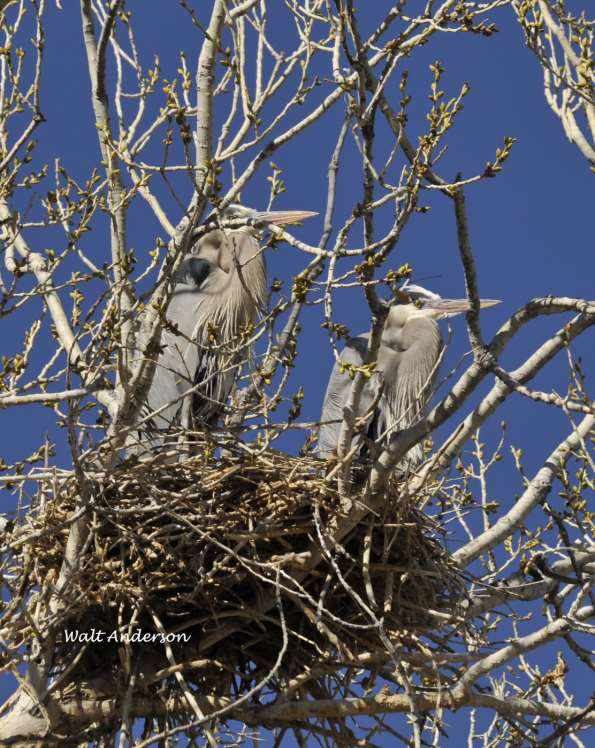
Herons are seasonally monogamous; that is, they pair off with a new mate for each breeding season but have a tight pair bond for that year. The male brings sticks to the female, who arranges the nest to her liking. Often old nests are refurbished the following year. A typical clutch size is 3-5 eggs, and both parents incubate. Eggs hatch asynchronously, so if parents can’t provide enough food, the youngest chick may starve.
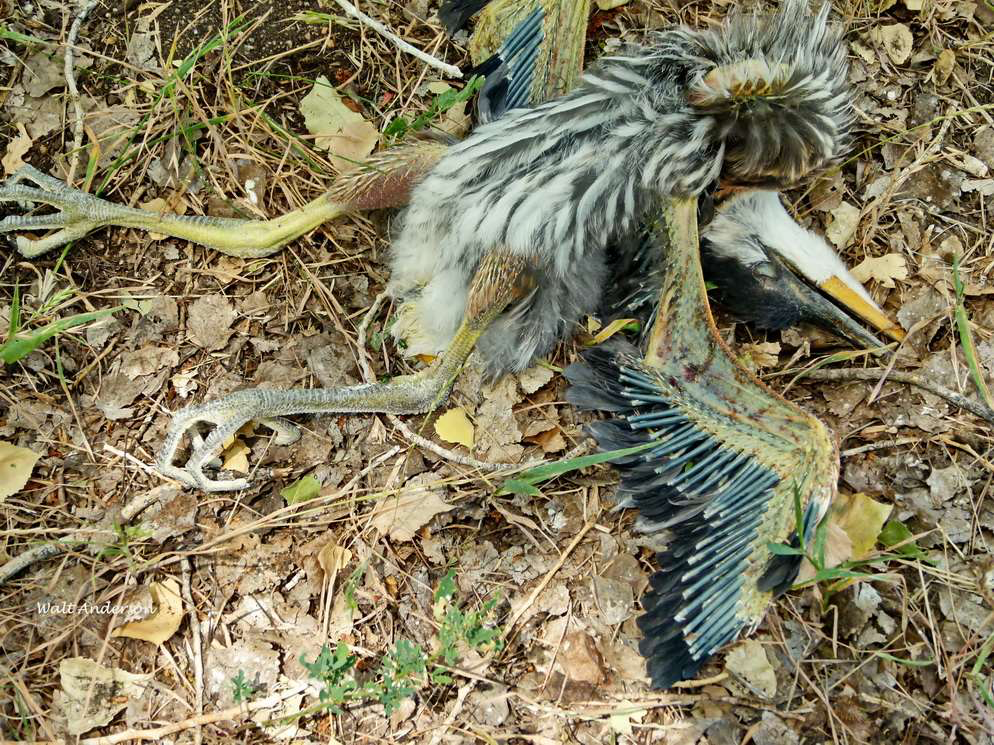
Occasionally a careless chick may fall from the nest tree before its feathers have developed enough to enable flight. After the difficult first year, herons have relatively low adult mortality. The oldest known Great Blue Heron was 23 years, 3 months.
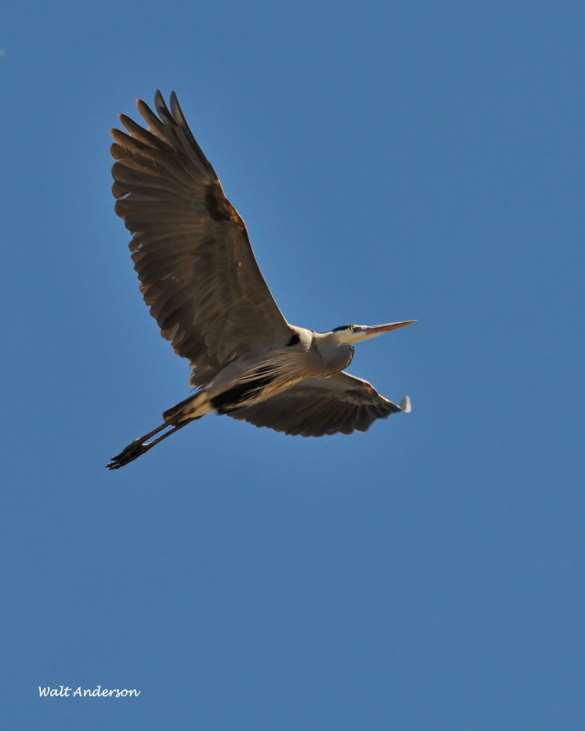
After the breeding season, herons may disperse widely, some even reaching Greenland and northern South America. They are strong, steady fliers, averaging 25 mph. The crooked-neck flight posture differs from that of the crane, which flies with its long neck projecting straight ahead. A fair number of people think the heron is a crane, but they are unrelated. Cranes often feed on grain and may form very large winter flocks, though pairs nest well apart on the ground. Herons are just the opposite—feeding alone but nesting in colonies, usually in trees.
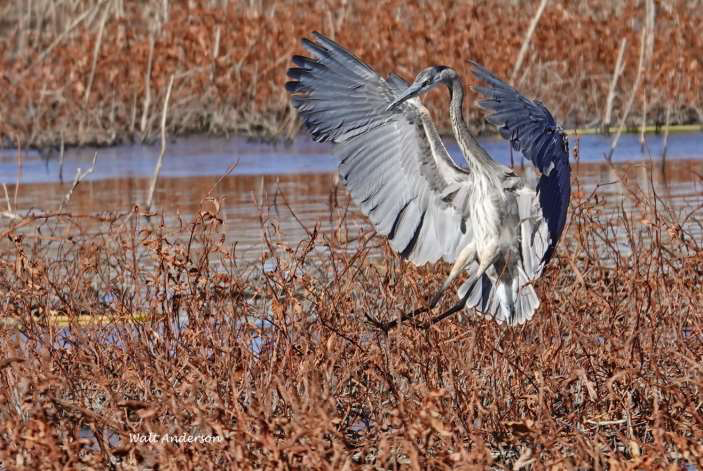
Landing gear down.
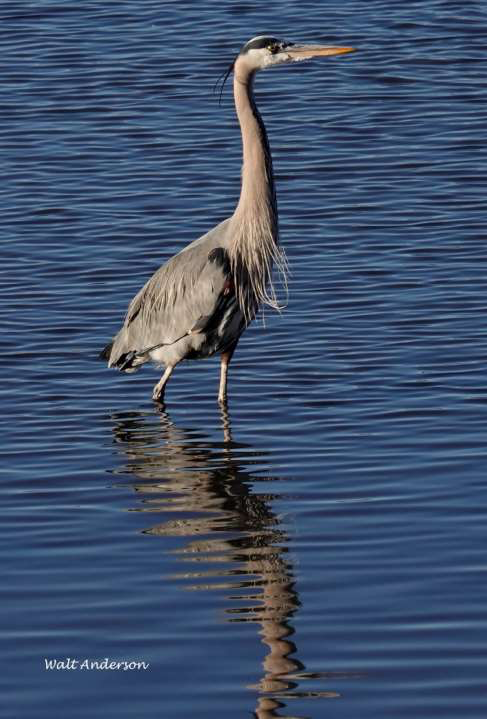
The Great Blue Heron is widespread in North America, from SE Alaska to Nova Scotia and down to northern Mexico and the Caribbean; some even live in the Galapagos Islands! In colder climes, they tend to migrate south, and when spring comes, males arrive back north first, choose nest sites, and display vigorously when the females come looking for new mates. Herons are quite adaptable in habitat selection as long as there is water, food, and nest sites. Some are now urban dwellers, fishing in golf course ponds and canals in places like Phoenix.
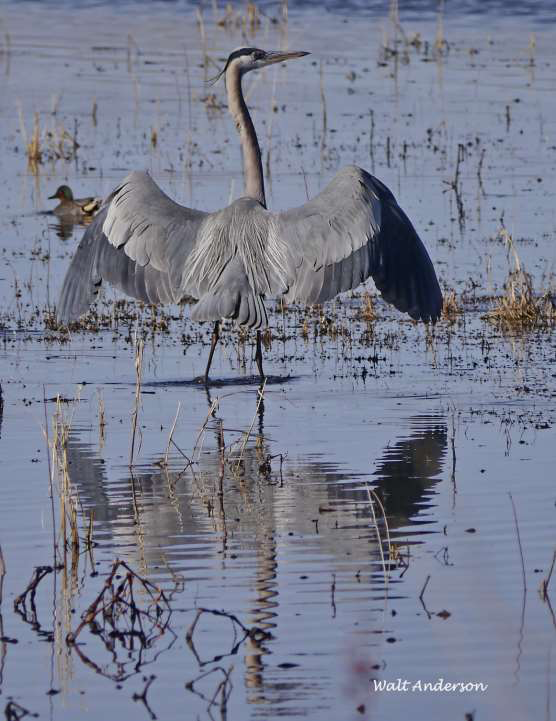
Herons are among my favorite birds. They bring joy even to people who think every small bird is a “sparrow.” Sports teams usually choose raptorial birds (e.g., hawks, “seahawks,” falcons, eagles) as mascots, but herons often have deeper spiritual reference, as is explained thoroughly here: https://www.richardalois.com/symbolism/heron-symbolism. If you haven’t given herons much thought, I urge you to take time to observe and learn from them. They are neighbors deserving of much respect.
